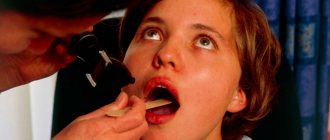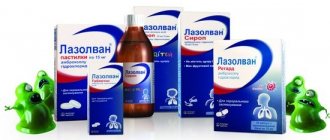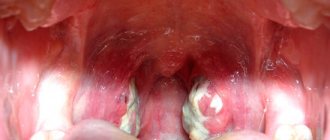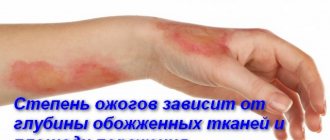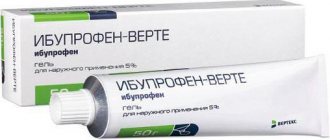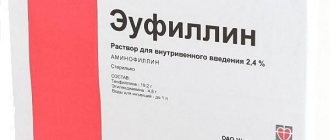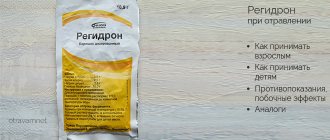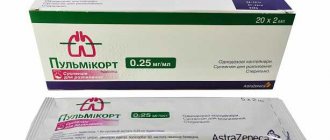Category: Published 11/10/2016 · Comments: · Reading time: 4 min · Views: 2,074
“Streptocide”, what does this chemotherapeutic antimicrobial drug from the sulfonamide group help with? The drug has bacteriostatic properties and is active against streptococci, pneumococci, gonococci, meningococci and other bacteria. The instructions for use of the medicine “Streptocide” suggest using it for sore throats, acne, and infected wounds.
Composition and release form
It is produced in the form of ointment, powder and tablets. The active element of the drug “Streptocid”, on which its action depends, is sulfonamide. The ointment contains soft white paraffin. The soluble liniment “Streptotsid” is also sold. Currently, tablets are not produced in the Russian Federation.
The ointment contains 5% or 10% of the active substance and is produced on the basis of petroleum jelly. You can also find a suspension consisting of streptocide, thymol, and an emulsifier. Liniment 5% contains 5 g of streptocide, animal and fish oils.
What is sulfonamide
The drug, known throughout the world under the name sulfanilamide, has proven itself in the treatment of all forms of sore throat. It belongs to the group of sulfonamides, which have an inhibitory effect on the synthesis processes of pathogenic microorganisms, causing their death. Streptocide has a complex effect on the mucous membranes of the oropharynx:
- Antimicrobial
- Antibacterial
- Anti-inflammatory
In the countries of the former Soviet Union (and not only) streptocide is available in several dosage forms: ointment, powder and tablets. Due to the possible strong toxic effect that this drug can have on liver cells, the use of streptocide is not recommended without consulting a doctor.
In addition, only a doctor will help you determine the correct dosage of the drug, and also tell you how to use the medicine to eliminate negative consequences.
Pharmacological properties
Ointment, tablets "Streptotsid" - why are they popular among patients? The medicine has bacteriostatic properties. Shows activity against gram-positive and -negative bacteria, cocci, rods, chlamydia, protozoa. An alkaline environment promotes the best effect of the medication. The active substance is rapidly absorbed when administered internally and reaches maximum concentration in the blood after 1-2 hours. Pseudomonas aeruginosa, enterococci and anaerobes do not respond to the action of the drug.
Features of using the powder
It is applied to the affected skin. Dressings are performed after one or two days.
Adults can spend a maximum of 5 g per use of Streptocid powder for wounds and burns, and 15 g per day. For children under 3 years of age, the dosages are different. A single dose for them is 0.1 g, a daily dose is 0.3 g.
Streptocide powder is used for as many days as prescribed by the doctor. If there is no improvement, consultation with a specialist is necessary.
When using Streptocide powder for wounds and burns, some people experience side effects. Those patients who did not know that they had hypersensitivity to sulfonamides experience allergic reactions. These symptoms require discontinuation of the drug. There may also be undesirable effects such as:
- dizziness;
- headache;
- nausea;
- vomit;
- feeling of pain, heaviness in the stomach;
- blue discoloration of the skin;
- a drop in the level of leukocytes in the blood (leukopenia);
- decrease in the number of granulocytes in the blood (agranulocytosis);
- increased content of crystalline salt residues of biologically active acids in the urine (crystalluria).
Powder, tablets, ointment “Streptocide”: what helps
Indications for use include the following diseases:
erysipelas; acne; infected wounds of various etiologies; folliculitis; impetigo; pyoderma; purulent and inflammatory lesions of the skin; burns 1-2 degrees; carbuncles.
What else does Streptocide help with? The medicine is prescribed for acne, sore throat, including sore throat. Like the ointment, “Streptocid” is soluble, the powder is used to prevent suppuration, and for infections of the urinary tract and respiratory system.
Analogues of the drug
Analogues (possible substitutes) of Streptocide include drugs such as Sulfanilamide, Streptonitol, Argedin, Etazol, Argosulfan, Mafenida acetate, Dermazin, Sulfargin, Ebermin, Sulfadimezin, Turmanidze. The difference between Streptocide and the indicated drugs is small, but before use you should still consult a doctor.
The listed drugs can be used instead of Streptocide with the permission of a doctor. If you don’t know what to replace the drug with at home, use Baneocin or, better yet, Gentaxan.
Medicine "Streptocid": instructions for use
Using ointment
The medication is intended for local external use. The composition is applied to the affected areas of the skin in a thin layer. Liniment "Streptocide" 10 or 5 percent is applied to gauze. This bandage is used on the affected areas, changing after 1-2 days. Soluble “Streptocide” is used in the same way as the ointment.
Instructions for the powder
This form of the drug is sprinkled on purulent and infected lesions and burns. For deep wounds, the powder is used in ulcerated cavities in a volume of 5-15 g. The medicine is also applied using bandages that are pre-treated.
Instructions for use of "Streptocide" tablets
The medicine is taken orally in an amount of 500 mg up to 5-6 times a day. A single dosage should not exceed 2 g, daily dosage – 7 g.
Treatment of sore throat
To treat this disease, Streptocid powder is used. For sore throat, it helps in cases where the infection has not yet entered the internal tissues, but the progress of the disease is already noted and a white coating has appeared. The tonsils and mucous membrane of the throat are sprinkled with the powder, and after 10 minutes they are rinsed with a disinfectant solution. Similar events are carried out every 2 hours.
At the initial stage of sore throat, you can use tablets that are crushed and mixed with honey. To do this, take 1 tablet and 1 teaspoon of honey and take it orally before bed. Improvement occurs the next day.
Contraindications
For all forms of release of Streptocide:
- renal/liver failure;
- congenital deficiency of glucose-6-phosphate dehydrogenase;
- anemia;
- porphyria;
- azotemia;
- period of pregnancy and lactation (breastfeeding);
- hypersensitivity to sulfonamides.
Additionally for powder:
The amount of medicine you take depends on the strength of the medicine. Also, the number of doses you take each day, the time allowed between doses, and the length of time you take the medication depend on the medical problem for which you are using the medication.
For oral dosage form: Adults and teenagers—2 to 4 grams for the first dose, then 1 gram every four to six hours. The usual dose is 75 milligrams per kilogram of body weight for the first dose, then 5 mg per kg of body weight every six hours or 25 mg per kg of body weight every four hours. For bacterial infections: Adults and teenagers: 500 milligrams to 1 gram every six to eight hours. For oral dosage form: For bacterial or protozoal infections: Adults and teenagers: 2 to 4 grams for the first dose, then 1 to 2 grams every eight to 12 hours. The usual dose is 50 to 60 milligrams per kilogram of body weight for the first dose, then 25 to 30 mg per kg of body weight every twelve hours. For oral dosage forms: Adults and adolescents - 2 to 4 g for the first dose, then 750 to 5 g every four hours; or 1 to 2 grams every six hours. The usual dose is 75 mg per kilogram of body weight for the first dose, then 25 mg per kg of body weight every four hours or 5 mg per kg of body weight every six hours. Adults and teenagers—2 to 4 grams for the first dose, then 750 to 5 grams every four hours; or 1 to 2 grams every six hours.
- Children aged 2 months and older.
- The dose is based on body weight.
- The usual dose is 5-25 mg per kilogram of body weight every six hours.
- Children under 2 months are not recommended.
- Children under 2 months of age—Use and dosage should be determined by your doctor.
If you miss a dose of this medication, take it as soon as possible.
- chronic heart failure;
- inhibition of bone marrow hematopoiesis;
- diseases of the hematopoietic system;
- thyrotoxicosis.
Streptocide should be used with extreme caution in children.
Opinions of patients and doctors
Patients who have used Streptocide as an antimicrobial agent give completely positive reviews. They note the speed and effectiveness of the medication. At the same time, they emphasize the low price and breadth of action of the drug. Streptocide powder helps against acne in combination with lotions and special skin care products.
Streptocide is a very effective antibacterial drug for internal or external use, which helps to cope with various infectious and inflammatory diseases of the body.
This medication has a wide spectrum of antimicrobial action against streptococci, pneumococci, gonococci and other pathogenic microorganisms.
The drug is most often used in the complex treatment of various inflammatory diseases of the oropharynx (pharyngitis, tonsillitis), infectious processes of the respiratory system (laryngotracheitis, bronchitis), as well as skin infections and acute or chronic diseases of the urinary system (glomerulonephritis, cystitis, pyelonephritis, etc. )
The main active medicinal substance of Streptocide is Sulfanilamide, which has a wide spectrum of antibacterial action against many bacteria.
Main indications for use of Streptocide:
various purulent-inflammatory skin diseases (boils, carbuncles, acne, etc.); burns 1-2 tbsp. (prescribe the drug in the form of a local powder on the wound surface of the skin); acute or chronic respiratory diseases (laryngitis, tracheitis, pneumonia, etc.); tonsillitis (inflammation of the mucous membrane of the throat); acute form of enteritis or colitis; severe wound infections; gonorrhea; sepsis (blood poisoning); meningitis (inflammatory brain damage); acute form of cystitis (inflammation of the bladder).
Attention: before long-term use of Streptocide, it is advisable to consult with a qualified general practitioner!
The drug is available in the form of tablets for internal use, as well as 5 or 10% ointment for local application to the affected area of the skin.
Consequences of overdose
When using Streptocide in large quantities, you must be prepared for signs of an overdose to appear. Due to non-compliance with recommended doses and prolonged use of tablets, complications arise, including dizziness, abdominal pain, nausea, vomiting and increased drowsiness.
To eliminate the symptoms of overdose, immediately stop taking the pills and also perform gastric lavage.
How to drink Streptocid?
For adults, Streptocid should be taken 1 t (500-1000 mg) no more than 4-6 r. a day after meals, with plenty of water.
The minimum interval between taking Streptocide should be at least 2-3 hours.
For the treatment of various infectious and inflammatory diseases of the skin, it is recommended to use 5 or 10% streptocidal ointment, which should be applied in a small layer to the skin for no more than 2 rubles. for a day.
For children from 3 to 6 years old, it is recommended to take Streptocide in a total daily dose of no more than 50-100 mg, while for children over 6 years old it is approximately 200-300 mg. per day strictly as prescribed by the attending physician.
The average course of treatment with this antibacterial drug depends on the specific disease and ranges from 3-5 to 7-10 days.
Streptocide for sore throat
Little Fox Vuk
Cheap treatment
The prices for medicines recently are simply terrifying. After both children and I got sick, I received a list from each doctor for 150-200 UAH. No budget can handle this. At the same time, everyone thinks that an expensive medicine means it is good.
However, many people forget that there are many cheap old remedies. Their effect is excellent and is in no way inferior to “highly effective” drugs. For adults, treatment costs pennies; for children under two years old, no more than 70 UAH.
Runny nose: farmazolin (dries out, opens the channels), interferon (kills the virus), warming up the ears (treats... Read more →
Liana
about a sore throat
The doctor you visited at the clinic or he visited you at home, upon your call, diagnosed you with a sore throat... Read more →
Tanya
Treating colds without pills
I found it on the Internet, maybe it will be useful to someone)) HOW TO COVER A COLD WITHOUT PILLS. You shouldn’t needlessly poison your body with pills when you have a wonderful and absolutely safe alternative at hand - natural medicines.
The first symptoms of a cold - runny nose, slight fever, coughing - can ruin the most pleasant day. Slush, cold and wind. The result is a cold.
It’s good if it’s limited to a runny nose, but what if not? TIP 1: COMPRESS FOR SEVERE COUGH! TREATS IN AN EVENING! I want to share the recipe for flatbread that I always use for bronchitis: 1 tbsp… Read more →
Alina
sore throat treatment (note)
Child development calendar
We will tell you real stories of our mothers who have gone through this or are going through it right now!
Olyushka
ANTIBIOTICS
Any drug, but especially a chemotherapy drug (antibiotic), if not indicated, is contraindicated. 1 V. G. Bochorishvili The very term “antibiotic” in literal translation looks very ominous: “anti” - against, “bio” - life. An opponent of life, in short.
But, fortunately, we are not talking about life in general, but about the life of microorganisms in particular. Penicillin was discovered in 1928
Please note, it is not invented, not invented, but discovered. After all, the whole point is that antibiotics have existed and exist in nature for so long...
Continue reading →
Pearl
HOW TO DEFEAT A COLD WITHOUT PILLS.
HOW TO DEFEAT A COLD WITHOUT PILLS. You shouldn’t needlessly poison your body with pills when you have a wonderful and absolutely safe alternative at hand - natural medicines.
The first symptoms of a cold - runny nose, slight fever, coughing - can ruin the most pleasant day. Slush, cold and wind. The result is a cold.
It’s good if it’s limited to a runny nose, but what if not? TIP 1: COMPRESS FOR SEVERE COUGH! TREATS IN AN EVENING! I want to share the recipe for flatbread that I always use for bronchitis: 1 tbsp. l. honey, 1 tbsp. l. dry… Read more →
Childhood diseases from one to three years
Discuss your topic in the community, find out the opinions of active Babyblog users
Go to community
Feren Elena
First aid kit for baby
A year has passed and now I can say with confidence that it definitely suited us, what didn’t, what we tried, what we shouldn’t take, what is worth taking in the first place! Although this is not a complete list, because...
The post is quite long! I decided to post the maximum + advice from the maternity hospital, surgeons, resuscitators. The entire list of medications... Read more →
Nastenka
Article about chronic tonsillitis
Side effects of Streptocide
skin itching; nausea or vomiting (mainly occurs with a significant overdose of the drug); headache; diarrhea; dizziness; dry mouth.
If any of the above side effects develop, it is recommended to completely stop further use of the drug, and also be sure to consult a doctor!
In this article, we looked at what Streptocide helps with, as well as how it should be taken correctly.
Share on social networks
Streptocide is an antimicrobial drug with a broad spectrum of action. Most often it is used for various injuries of the skin, promoting faster disinfection and healing of wounds, treatment of sore throats and infectious lesions of the body's mucous membranes.
The components of streptocide penetrate the bacterial cell, disrupting its metabolic processes, resulting in a decrease and suppression of the growth of pathogenic microorganisms.
Streptocide is an effective antimicrobial bactericidal drug
Streptocide is available in various forms: tablets, powder and ointment. The drug contains the main active ingredient – sulfanilamide.
The main problems for which the use of streptocide will help:
Powder and ointment are used externally to treat festering wounds, infected burns of the first and second stages, purulent and inflammatory processes of the skin, boils, carbuncles, and acne. The tablets are used for internal use for sore throats and any infectious lesions.
The shelf life of streptocide, as a rule, does not exceed five years. Streptocide can be purchased at any pharmacy without a prescription.
Rules of application
Streptocide in tablet form should be taken according to the recommended dosage:
Children (6-12): take 0.3 grams four times a day; do not exceed the daily dose of the drug - 1.2 grams. Children (from 12 and adults): take 0.3-0.6 grams three times a day, do not exceed the daily dose of the drug - 2.4 grams.
Streptocide is able to be absorbed into the blood within one to two hours after application. Up to 95% of the drug is excreted by the kidneys within 16 hours after use. The duration of taking streptocide should be adjusted by a doctor, but, as a rule, it is not used for more than seven days.
The tablets can also be used for external use, after crushing them into powder. The result of the action of streptocide is the cessation of the release of purulent masses from the wound, as well as the formation of a crust that will cover the affected area.
Streptocide in powder form is used exclusively externally; the drug is placed under a bandage on the wound area.
The dressing must be changed daily. Recommended dosage:
Children (3-12): use 0.3 grams per day. Adults: use 5 grams, maximum daily dose – 15 grams.
The ointment is used exclusively externally, to treat wounds under a bandage. The dressing is changed daily. Streptocide should be stored in a dry place, protected from light, away from children.
Side effects and contraindications
Streptocide has a number of contraindications that you need to familiarize yourself with before use.
The use of streptocide may cause the following side effects:
Nausea accompanied by vomiting. Diarrhea. Allergic reactions (dermatitis, urticaria). Leukopenia/thrombocytopenia. Anemia. Myocarditis/tachycardia. Cramps. Hypoglycemia. Visual/sleep disturbances. Headache. Dizziness.
If one or more side effects are detected, the drug should be stopped immediately. In case of overdose of the drug, gastric lavage should be performed and enterosorbent should be taken. In particularly severe cases, hemodialysis may be necessary.
Streptocide should not be used if:
Anemia Kidney and liver diseases Azotemia Porphyria Pregnancy and lactation Diseases of the bone marrow and hematopoietic system
When infected with group A streptococci, since the drug is not able to affect bacteria of this type.
Useful video - How to prepare ointment from Streptocide for cough and runny nose:
Streptocide can be used with extreme caution and under medical supervision:
Children under six years old. Patients over 65 years of age. If long-term use of the drug is necessary. If you have diabetes. When using streptocide, it is not recommended to be in direct sunlight. When using streptocide, drinking plenty of fluids is recommended. The use of streptocide may adversely affect the ability to drive vehicles.
An important factor is strict adherence to the permissible dosage of the drug, since an increase will lead to poisoning, and an understatement will make the therapy ineffective, since the bacteria will be able to develop immunity to streptocide.
Noticed a mistake? Select it and press Ctrl+Enter to let us know.
Indications for use
Powder
The powder is used as part of complex therapy for purulent wounds, infected burns (I-II degrees) and other purulent-inflammatory processes of soft tissues.
This medication works best when a constant amount is present in the blood or urine. To maintain a constant amount, do not miss any doses. Additionally, it is best to take doses at even intervals day and night. If you need help planning the best time to take your medication, contact your health care professional.
The dosage of medications in this class will be different for different patients. Follow your doctor's directions or the directions on the label. The following information includes only the average doses of these medications. If your dose is different, do not change it unless your doctor tells you to do so.
- burns (I-II degree);
- infected wounds of various etiologies;
- folliculitis;
- carbuncles, boils;
- impetigo;
- acne vulgaris;
- erysipelas;
- tonsillitis.
Interaction of streptocid ointment with other drugs
The medicinal effect may increase/decrease when using the ointment simultaneously with drugs containing:
- mesatone;
- digitoxin;
- adrenaline hydrochloride;
- caffeine;
- hydrochloric acid;
- phenobarbital.
Reviews of the drug streptocidal ointment for acne, burns and other ailments are discussed below.
Reviews about the ointment are mostly positive; many people purchased it for their home medicine cabinet. A significant problem is the fact that with its help they are trying to cure almost all known diseases of the dermis. But it only helps eliminate diseases caused by certain microorganisms. Self-medication often delays a trip to the dermatologist.
If we take the reviews about the ointment as a percentage, then there will be 80% positive, and about 20% negative.
- Svetlana. After a rash appeared on my son’s skin, I began treating the dermis with “Streptocidal ointment.” After several days I did not see any effect. The drug did not help with our problem. We turned to a dermatologist for help, who diagnosed allergic dermatitis (non-contact). He explained to us that the ointment is prescribed only when the disease is bacterial in nature.
- Irina. The ointment helped me a lot, it helped eliminate acne, which was so ruining my life. The effect is excellent, and the cost of the drug is low.
You should use any of the products only after consulting a dermatologist.
Streptocide ointment is a medicine that is intended for topical application. As the instructions for use indicate, the drug has a pronounced antibacterial and antiseptic effect.
Also, streptocidal ointment helps suppress the activity of streptococci (it disrupts the intracellular membrane of these microorganisms, which leads to disruption of their growth).
Full instructions are available at the link: Indications for use
As the instructions for use indicate, streptocidal ointment at a concentration of 10% can be used in the following cases:
- Pyoderma
- Ulcerative skin lesions
- Inflammation of the skin and external tissues
- Purulent skin lesions
- Epidermal cracks
- Skin diseases caused by streptococci or other microorganisms sensitive to sulfanilamide
- Shallow wounds on the skin
- Acne.
Also, streptocidal ointment at a concentration of 10% helps with burns in children and adults.
To ensure that the medicine does not cause any unwanted side effects, it is recommended that you familiarize yourself with the contraindications to its use:
- Acute porphyria
- Individual patient intolerance to sulfonamide substances
- Chronic renal dysfunction.
It is also not advisable to prescribe the drug to children under three years of age, since there is no reliable data on the safety of such therapy.
During pregnancy, it is recommended to consult a doctor before starting to use this medicine (in the first trimester of pregnancy, streptocidal acne ointment is contraindicated for use).
Before treatment with this drug, you should always consult your doctor.
Streptocide ointment at a concentration of 10% has the following features of its use (for each individual disease):
- To treat purulent skin diseases, the drug should be applied in a thin layer to the sore spot. A sterile bandage must be applied on top.
Streptocide ointment will gradually dry out the pustules and get rid of germs. The duration of such treatment should be 1-2 weeks.
- In case of severe inflammation of the skin and ulcers on it, it is recommended to apply the product twice a day in an even thin layer (it should not be rubbed into the wounds). Also, immediately before applying the medicine, it is advisable to treat the wounds well with antiseptic solutions.
- Streptocide ointment for acne is applied pointwise (directly to each pimple). It is very important that before the procedure the skin is well cleaned and wiped dry with a napkin.
It is important to know that to treat acne, this product can be used for no longer than seven days in a row, so as not to dry out the skin.
- If the skin is slightly damaged and cracks appear on it, streptocidal ointment should be applied in a very thin layer so that the substance can be completely absorbed within a few minutes.
The medicine should be applied frequently - 3-4 times a day. Thus, wound healing can be achieved in just 4-5 days.
In addition to the basic principles of treatment, streptocidal ointment also has the following rules for its use (what should not be done and what can be done):
- It is important to avoid getting the ointment into the eyes and other mucous membranes. If you accidentally get the medicine into your eyes, rinse them immediately with water.
- The duration of general treatment should be determined by the doctor depending on the complexity of the disease.
- It is not recommended to combine treatment with this drug with other topical medications.
- Before applying the ointment to your face, wash it with warm soapy water.
- If burning, tight skin, redness or pain occur, treatment should be discontinued immediately.
It is important to know that pimples and acne can be not only an external sign of a skin disease. They can also indicate the development of serious diseases in the gastrointestinal tract, so before treatment it is recommended to take tests and undergo an ultrasound of the abdominal cavity to find out the true cause of the disease.
Streptocide ointment is a sulfonamide drug intended for external use. It is highly effective in the treatment of infectious and inflammatory skin diseases. It has no categorical contraindications, but there may be side effects.
Streptocide (ointment) should not be prescribed simultaneously with medications that contain caffeine, hydrochloric acid, digitoxin and adrenaline hydrochloride.
In all other cases, no side effects were observed.
No particularities in the consumption of alcoholic beverages during treatment with streptocidal ointment were recorded.
The drug contains the active component sulfanilamide (streptocide) - 0.1 g or 0.05 g and an additional component - petroleum jelly.
When you should not expect help from streptocide
However, streptocide is a medicine and, like any medicine, it has a number of contraindications. So, it is not used if there are ulcers in the throat.
Streptocide should not be used to treat sore throat in patients with thyroid diseases or diseases of the cardiovascular system.
Streptocide for the throat is prescribed very carefully to patients with chronic kidney diseases (nephritis, renal failure), the drug is eliminated with their help.
With long-term use, it is necessary to monitor the functioning of the liver and kidneys; for this, blood is regularly donated.
Can streptocide be used by pregnant and lactating women and children?
Doctors do not recommend gargling with streptocide or taking it orally during the first two trimesters of pregnancy. Treatment with sulfonamides is not indicated during breastfeeding.
Treatment of throat in children with streptocide, according to the instructions for use, is possible from the age of 5. But the child’s prescription must be made by a pediatrician, who is also obliged to calculate the dose and frequency of use, and choose the most appropriate treatment method.
Reviews about "Streptocide"
People leave mostly positive reviews about the various dosage forms of Streptocide. The drug is really effective. Thanks to it, the affected skin recovers faster without any complications. For example, they say about the powder that it is a very convenient dosage form. You just need to cut the corner of the bag of medicine and pour it onto your wound or burn. The powder does not create discomfort as it does not sting.
Many people have positive reviews about it being inexpensive. This is true. Approximate prices:
- sachet of powder, 2 g – 35 rubles;
- ointment for local and external use, 25 g – 87 rubles;
- liniment, 30 g – 100 rub.
The disadvantages of the drug include the presence of contraindications and side effects.
Streptocide powder, salicylic acid and chloramphenicol for acne on the face (folk recipe) - video
Rp.: Streptocidi 10% unguentum
S. Lubricate wounds 3 – 4 times a day.
In the recipe after the abbreviation “Rp.” followed by the name of the drug in Latin “Streptocidi”, then its dosage form and concentration are indicated (also in Latin): “10% unguentum”. In the second line after the abbreviation “S.” indicates how to use the prescribed remedy. The second line of the prescription is an instruction to the patient.
The recipe for Streptocide liniment is written as follows: Rp.: Streptocidi 5% linimentum S. Lubricate wounds 3 – 4 times a day.
In the first line of the prescription, the name of the drug (Streptocidi), its dosage form (linimentum) and concentration (5%) are indicated in Latin. The second line instructs the patient how to use the medicine prescribed by the doctor.
The recipe for Streptocide powder is written as follows: Rp.: Streptocidi pulvis 5 gS. Powder the wounds 3 – 4 times a day.
In the first line of the prescription, the doctor indicates in Latin the name and dosage form of the drug (Streptocidi pulvis - Streptocide powder), and in the second line - a brief instruction for the patient on how to use the drug.
Streptocide ointment is an antibacterial drug.
Release form and composition
The dosage form of the drug is ointment for external use 10% (25 g in a jar or tube, 1 jar or tube in a cardboard box).
Composition of 100 g ointment:
- active substance: sulfanilamide – 10 g;
- auxiliary component: Vaseline.
special instructions
In case of renal and liver failure, the drug is used with caution and under constant medical supervision. A long course of treatment requires laboratory tests of the blood condition.
It is not recommended to use it in combination with other medications that contain novocaine, as it can reduce the effect of the drug.
Avoid contact of the ointment with the eyes and mucous membranes. Also, during the course of treatment, you should increase your fluid intake.
- Be sure to wash your hands after applying the ointment.
- You need to make sure that the medication does not come into contact with your eyes.
- No need to rub.
- Can be applied under a gauze bandage.
- If the ointment is used when the patient has liver dysfunction, a prerequisite is to increase the volume of fluid consumed.
- With long-term use, monitoring of blood composition, liver and kidney function is required.
- If intolerance to the components is detected, treatment is stopped.
Large areas affected by the disease should be covered with a sterile bandage, which is changed every 2-3 hours. Do not apply ointment. If obvious signs of an allergic reaction are visible after the previous treatment - redness of healthy areas of the skin, rashes and a burning sensation directly in the wound.
You should not prescribe Streptocide ointment simultaneously with medications that contain digitoxin, hydrochloric acid, caffeine, or adrenaline hydrochloride. They do not interact with each other, so the development of unwanted symptoms is possible. There have been no cases of drug overdose.
The drug is available in pharmacies without a prescription, so it is sold everywhere. The price for a 25 g aluminum tube varies from 45 to 75 rubles. How much the medicine costs in online stores depends on their policy, but there is no big difference in cost, especially since you can buy Streptocide ointment inexpensively at any pharmacy.
Your own doctor
Streptocide is one of the “oldest” sulfonamide drugs. For oral administration, it is available in tablets and powders with a shelf life of 10 years.
Mechanism of action. Streptocide, like other sulfonamide drugs (see norsulfazole, sulfadimezin, sulfadimethoxine), worsens the habitat for bacteria. In the presence of streptocide, the fertility of bacteria, but not fungi and viruses, decreases. The lifespan of individual bacteria in the presence of streptocide changes insignificantly. I recommend! Clean the aquarium there and not suffer! However, long-term exposure to streptocide can lead to complete extinction of the infectious agent population. In the human body, this usually occurs by the 4th - 6th day of constant exposure to the drug? Since the dose of streptocide taken orally lasts only about 4 - 5 hours, the drug should be taken in this regard 5 - 6 times a day. All sulfonamides are broad-spectrum antimicrobial agents, inferior in the strength of their antimicrobial action to antibiotics, but superior to them in their safety for humans.
Application. Streptocide is used to treat tonsillitis, pneumonia, enterocolitis, erysipelas, cystitis, pyelitis and wound infections. It is taken orally at 0.5 - 1 g per dose every 4 - 5 hours for 4 - 6 days until body temperature normalizes. At the same time or completely independently, streptocide powder can be used to dust infected surfaces (for example, skin with burns, ulcers, eczema, purulent wounds, as well as mucous membranes of the nose or ear, runny nose or otitis media). In terms of the strength and duration of its antimicrobial action, streptocide is similar to norsulfazole, but unlike it, streptocide is less likely to cause kidney complications (less often deposited in the renal pelvis and ureters in the form of stones). In this regard, streptocide is safer than norsulfazole. When taking streptocide, there is no need to consume large amounts of water, as required by taking norsulfazole.
Complications. Streptocide is a relatively safe remedy. Very rarely, it can cause headache, dizziness, nausea and vomiting.
Contraindications. Taking streptocide is contraindicated in cases of severe kidney damage, anemia, Graves' disease and pregnancy.
lekaru.ru
How to treat a runny nose with the drug
For a long time, doctors rejected the treatment of runny nose with streptocide as a folk method without proven effectiveness. But today it is recognized that the antibiotic copes well with rhinitis of bacterial origin.
It is worth noting that a runny nose, referred to in medical literature as rhinitis, is an inflammation of the nasal mucosa, which can have a different nature. The causes of the disease include viruses, bacteria, and allergens.
A runny nose should not be confused with a situation where, in some cases, mucosal cells begin to produce more special secretions than usual. This happens, for example, in the cold and represents a protective reaction of the body.
The main signs indicating that a person is faced with the disease:
- the nose is constantly stuffy;
- unpleasant sensations in the nose spread to the throat.
Streptocide is effective in treating a runny nose, the cause of which is a bacterial infection.
In case of viral infection, it can only partially relieve symptoms.
In the treatment of a runny nose, both ready-made powder and crushed tablets are used. The latter are crushed as finely as possible. There are two main ways to use the medicine. The first, using a cotton swab, is good for heavy discharge, especially in children. A tampon soaked in vegetable oil is rolled in powder. Streptocidal rollers are inserted into both nostrils and left there for half an hour.
The procedure is performed twice or thrice a day.
The second method is suitable only for adults - sucking it into the nose through a straw. The crushed streptocide is placed on a clean surface or in a large spoon. A tube is inserted into the nostril, and the second one is closed with the hand. Then they inhale strongly. They do this the same way up to three times a day.
Feedback about use
Despite its disadvantages described above, people do not stop using Streptocide throat powder. Reviews about it are mostly positive.
Among the advantages, patients noted:
- efficiency;
- cheapness (although the price has recently increased);
- tested by time.
Along with this, a large number of “cons” were also noted. Among them:
- unpleasant bitter taste;
- inconvenient method of use;
- has contraindications;
- There is a small mass of powder in a sachet, therefore, for treatment you need to buy a lot of sachets.

